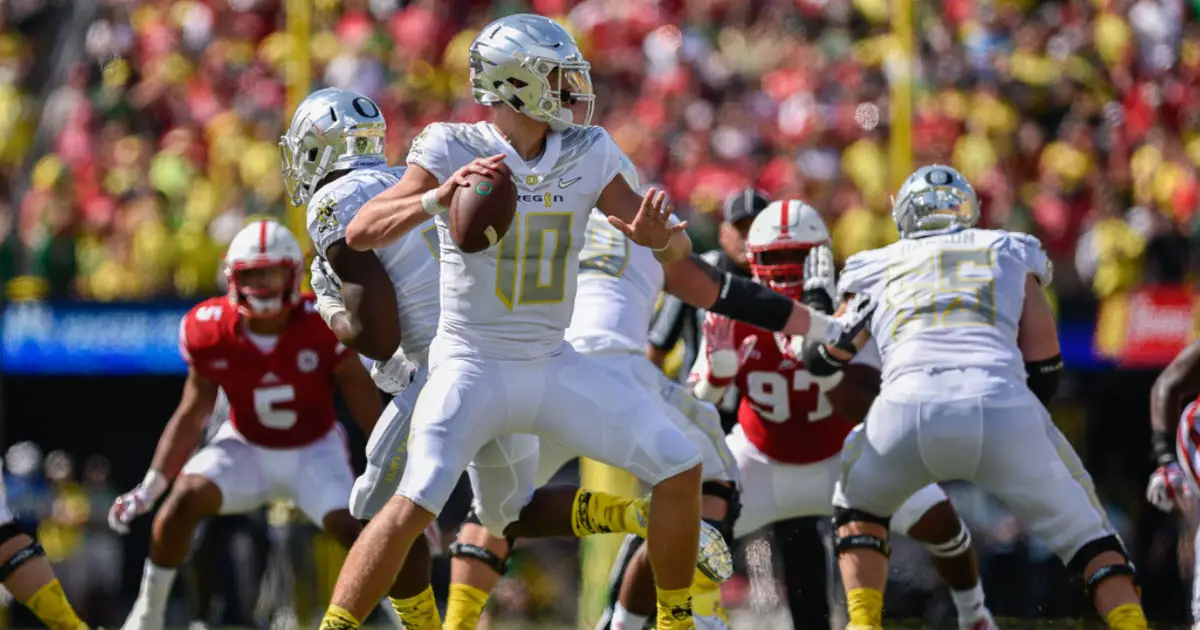There must be a return to real college football, yet while allowing for the progression that has occurred over the last two years. I present to you a solution to the developments that threatens to ruin the sport we all love.
I am 75 years of age, I have listened to and watched college football (CFB) with some sort of cognitive recognition for seven plus decades. Make no mistake, I have no desire to see a return to an unlimited number of players on scholarship, coaches not only allowed to, but encouraged to beat players about the head and having players practice until close to “buying the farm.” I most certainly do not miss the days when players of color were not allowed on the field of play.
I also have no desire to return to the days when one CFB game was broadcast on a Saturday. And while I feel there are too many bowl games that reward mediocrity–I do not want to return to the days of only four bowl games, all broadcast on first day of the New Year. Yet I do recognize that times have changed to where gaming action that I enjoy, such as online casino PlayAmo, is now part of football scene that so many engage in and appreciate.
Could We Return to…?
However, I would prefer that CFB could return to the days when the players were “student-athletes” and not “athlete-students.” Could return to the days when CFB was a regional and not a national sport. Could return to the days when CFB was not the minion of mammon and the media. Could return to the days when CFB was not a professional sport masquerading as an amateur enterprise; when academics mattered more than “my conference can beat your conference.”
When the SEC, (Since aided and abetted by a media cartel partner) was just another conference. When the best high school players in the west “stayed home” and played football in the Pac 8, 10 and 12 and the Pac-12 was not the laughing stock of CFB. When we had split-national champions on occasion, more than three post season games mattered and the best players did not quit on their team by “opting out” of bowl games to avoid the risk of injury; injury that could cost a player millions of National Football League (NFL) dollars.
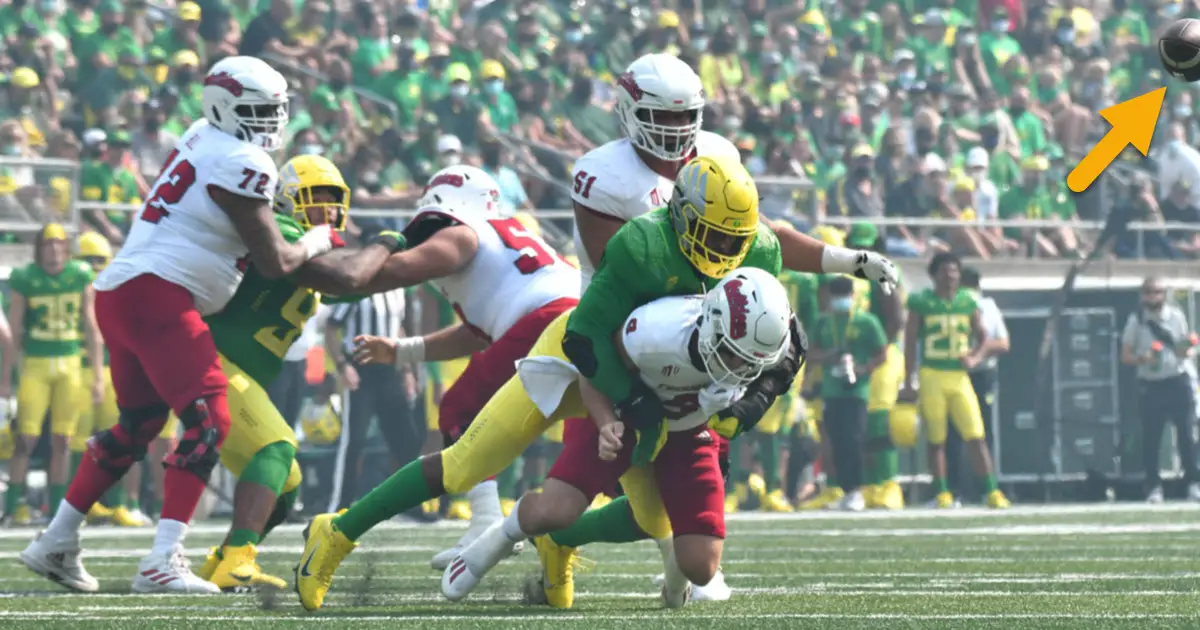
Kayvon Thibodeaux creates fumble vs. Fresno State and deserved his NIL.
I am not opposed to a student-athlete competing in any sport owning the right to his or her Name, Image and Likeness (NIL) and having the ability to market and benefit financially from their NIL. I am opposed to Texas A&M, under the guise of NIL, paying incoming players over $75M dollars in order to finish with the best recruiting class in CFB.
I am opposed to the University of Texas under the guise of NIL promising $50,000.00 a season to every lineman on offense regardless of whether the player starts or not. I am opposed that under the guise of NIL, every player on the Miami Hurricanes squad being paid $6.000.00 a year. I am opposed that under the guise of NIL a player not on scholarship, a so-called “walk-on” will have his tuition and other costs of his education paid for by a third party booster.
We Have College Football with No Rules?
In summary, I am opposed to CFB morphing into an uncontrolled pay-for-play enterprise. Uncontrolled because the United State’s Supreme Court’s decision in the Alston case neutered the NCAA from having any control over NIL. And, to date, no CFB conference has done anything to attempt to control NIL.
I am not opposed to a student-athlete being able to transfer to another school if they so desire; the equivalent of NFL free agency. I am opposed to a student-athlete being able to transfer at anytime for any or no reason with a modicum of prior notice to the school they currently attend. Coupled with NIL, this right is most certainly leading to roster-tampering by other schools.
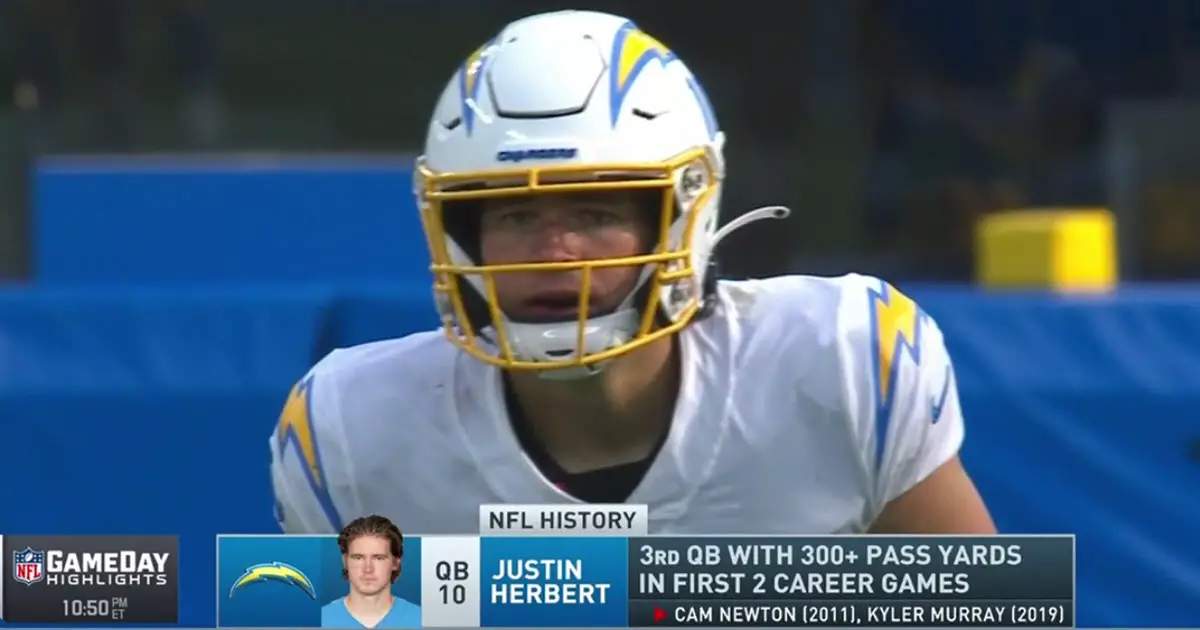
Are some college players getting more from NIL than NFL rookies?
The NFL places caps on money a team can spend on player salaries, has penalties for roster tampering, controls free agency, controls scheduling to make it as uniform as possible, distributes media revenue equally among its 32 member teams and has one commissioner.
CFB has none of these controls in place, a different commissioner for every conference, a neutered regulatory body; in other words “it’s every man for himself.” There is no uniform bargaining for media rights, every conference simply makes the deal best for itself without regard of what is best for CFB and the other sports sponsored by a given conference.
Is There a Possibility of Bringing Some Order to this Chaos?
Possibly. In response to the SEC’s underhanded poaching of Oklahoma and Texas from the B12, the ACC, B1G and Pac-12 conferences have formed an Alliance. Today the Alliance is a force in name only. The ten conferences and Notre Dame, that control the CFB Playoff, the Playoff Committee, generally agree that the Playoff should expand beyond a four team field.
The Playoff as currently structured and the six bowls involved in the Playoff have an agreement that that runs through the 2025 season. Today, ESPN owns all media Playoff rights. To date, the Playoff Committee has not been able to agree on the terms and conditions of Playoff expansion.
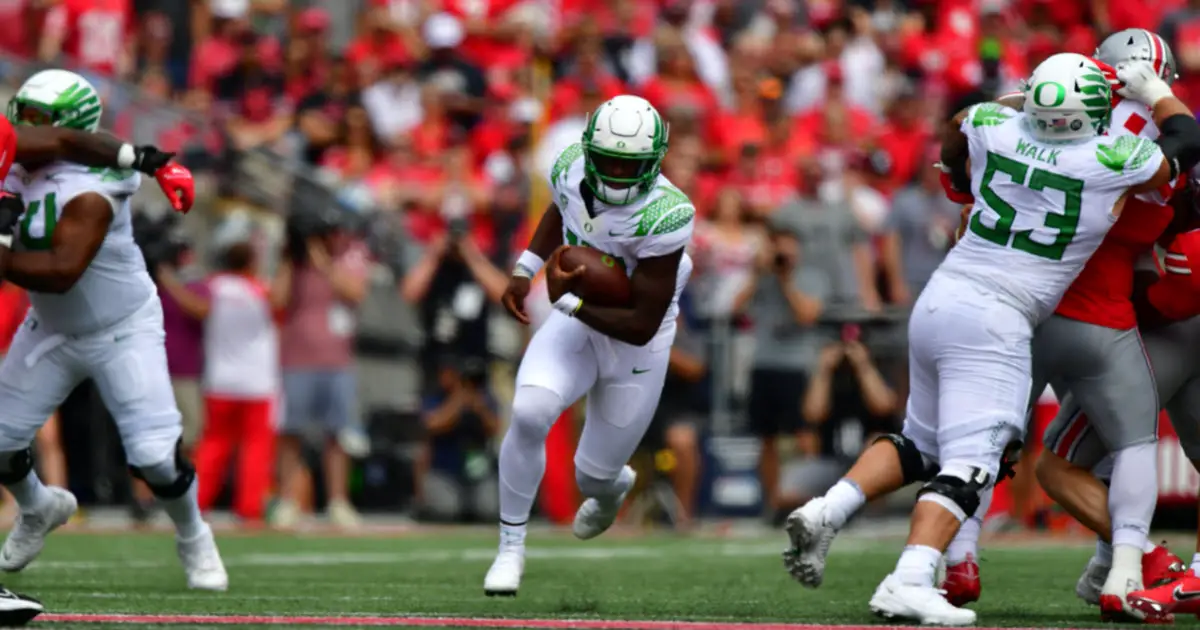
Great games like this can still happen with the Alliance.
The three conferences that are in the Alliance (and Notre Dame) in general place more importance on academics than do the other conferences involved in the Playoff. Perhaps it is time for the Alliance to agree to abandon the Playoff after 2025, lawfully regulate NIL and a player’s ability to transfer and to conduct its own post-season tournament?
All three Alliance conference champions would be in an eight team Run for the Roses (RFTR) field with five at-large (AL) teams including Notre Dame as a possible AL participant, constituting the field. No conference would be allowed more than three participants.
Using the 2021 final Playoff Committee rankings, the 2021 RFTR field would have been the following:
No. 8. Wake Forest at No. 1. Michigan
No. 5. Utah at No. 4. Michigan State
Semifinal – Played in Indianapolis
No. 7. Oregon at No. 2. Notre Dame
No. 6. Pittsburgh at No. 3. Ohio State
Semifinal– Played in Las Vegas
Championship Game – Played January 1st in the Rose Bowl.
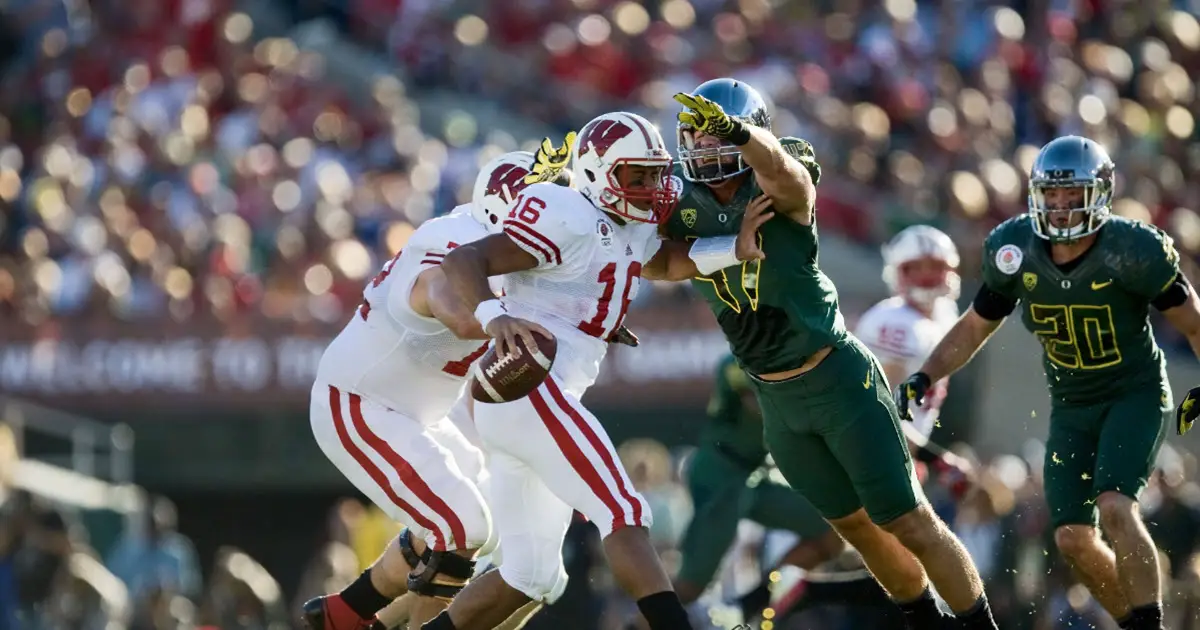
Those teams were in epic games such as this Rose Bowl with Russell Wilson, Kiko Alonso and John Boyett.
Players via proper NIL agreements, would be compensated for playing in the RFTR playoff games and Loss Of Income insurance would be provided for all players practicing for and playing in the games. Media rights for RFTR would be put out to bid. Would the media income be as much without the SEC participating? No. But it would be material.
While violating no law, the Alliance would regulate NIL to assure NIL transactions were being entered into as intended. The Alliance would place limitations on when a player could decide to transfer. The Alliance would agree on minimal grades and ACT/SAT scores for admission to a member institution, minimum APR requirements for teams and individuals, approve agents who could be hired by student-athletes and give student-athletes admissions preference for all graduate programs offered by Alliance member schools.
There are many other agreements Alliance members could enter into to benefit member schools and student-athletes and to assure that athletic success would not overwhelm the importance of academic success. I am “over the line” on the number of words allowed in a FishDuck article, but I hope additional thoughts will be brought up, discussed and debated in posts within the thread to this article in the FishDuck forum.
Let’s return to the real college football that we love.
Jon Joseph
Aiken, South Carolina
Top Photo by Kevin Cline
Related Articles:

Jon Joseph grew up in Boston, Massachusetts but has been blessed to have lived long enough in the west to have exorcised all east coast bias. He played football in college and has passionately followed the game for seven decades. A retired corporate attorney Jon has lectured across the country and published numerous articles on banking and gaming law. Now a resident of Aiken South Carolina, Jon follows college football across the nation with a focus on the Conference of Champions and the Ducks.

